
Union
Steam Ship Co – T.S.S. Tamahine 1925 to 1963
Please Note: Firefox and some other
Search Engines may not be suitable
Use Google Chrome for this Web Page
to load perfectly!
Please Note: All ssMaritime and other related
maritime sites are 100% non-commercial and privately owned, thus
ssmaritime is NOT associated with any shipping company or any
other organisation! Although the author has worked and been
involved in the passenger shipping industry for well over 60
years, but due to his old age and poor health, he was forced to
retire. Yet, he has completed well over 1,435 Classic Liners,
Passenger-Cargo Liners as well as humble converted C3 converted
Migrant Liners, which has transported countless thousands of folk
to the new world, as well on vacations’. I trust the
features online will continue to provide Classic Liner and Ship
enthusiasts both the information they are seeking, but more so
provide a great deal of pleasure and relive many happy memories!

The painting is by
a dear friend of mine, a remarkable Maritime Artist, Wallace
Trickett of
Visit
His site by clicking this link … Wallace_Trickett_Ship Paintings
Please Note:
Postcards, photographs & other images are either from the
author’s private collection or from my supporters.
Therefore a very
big thank you to three very special ssmaritime supporters for
sending me their wonderful photographs.
Sadly some of the
images shown may not be of the best quality, but they were the
best available
‘The’ T.S.S. Tamahine was without a
doubt a brave little steamer, which was especially built for the
“Union Steam Ship Co” (USSCo) to operate between the
North Island of New Zealand and the South Island, or from the
countries Capital city
She had two funnels and two mast’s and was certainly a well balanced and a smart looking although a small passenger ship. Her name is obviously a Maori name; and in English it means “Daughter of Wahine”.
Her livery was the typical Union Steam Ship Co
colour scheme as she had the traditional green hull, with red
boot topping, and a thin bright yellow ribbon located high up the
hull surrounding the ship. Her superstructure was all white, with
her two funnels being red and black topped, with masts and
derricks being buff, and she had three holds, two of these were
reserved for cars. She was designed to carry 637 one class
passengers.

A fine colour
photograph of T.S.S. Tamahine departing
The Union Steam Ship Company of
She was launched on July 8, 1925, and completed in October 1925 and she undertook her speed trials and she achieved a top speed of 17.3 knots.
She headed for
Having arrived in
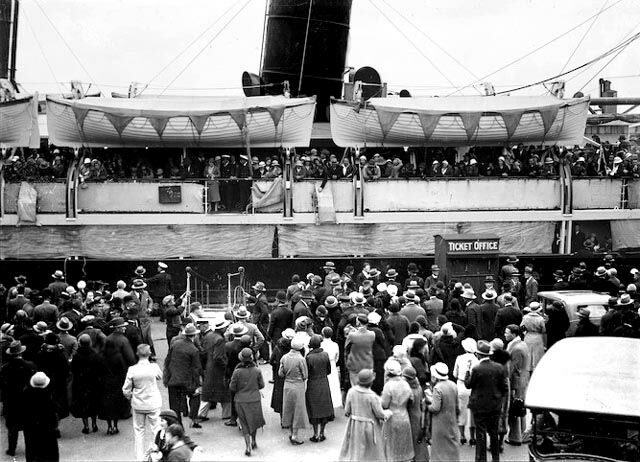
Crowds line up to
get a ticket and then get on board for a look
The T.S.S. Tamahine’s main duty was to
keep the North and
T.S.S. Tamahine departed for her maiden voyage
on December 21, 1925 and she was fully booked with enthusiastic
passengers all looking forward to their trip, many had booked a
return trip and had booked a cabin and pre booked seats in the
Dining Room for certain meals, etc.
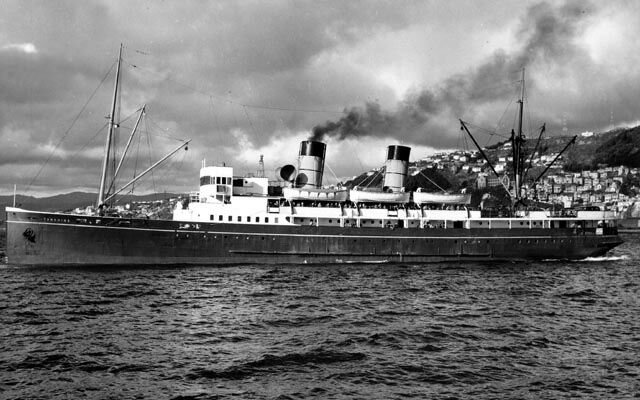
T.S.S. Tamahine is
seen departing
When other passengers were travelling one way
with either a car, or were continuing on by bus or a train. There
were also connecting services available by coach to the town of
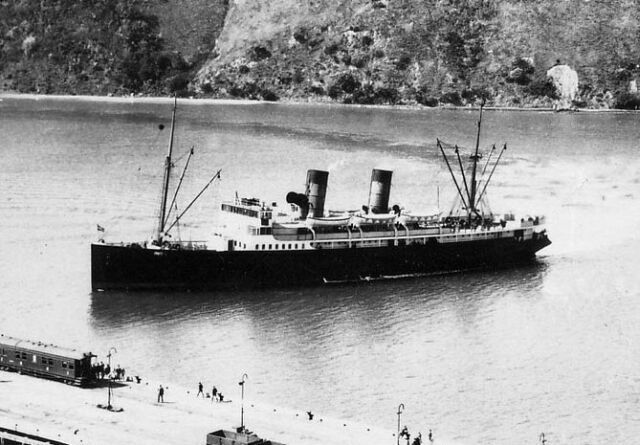
The
“Tamahine” is seen arriving at Picton
Provided by Jason
Hunter (Blenheim)
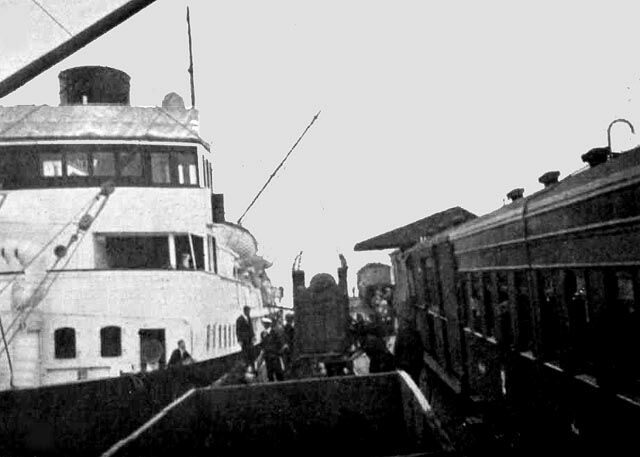
A train would meet
the “Tamahine”, as well as busses, and passengers on a
round voyage can
take a short walk to town and go shopping and have lunch ashore
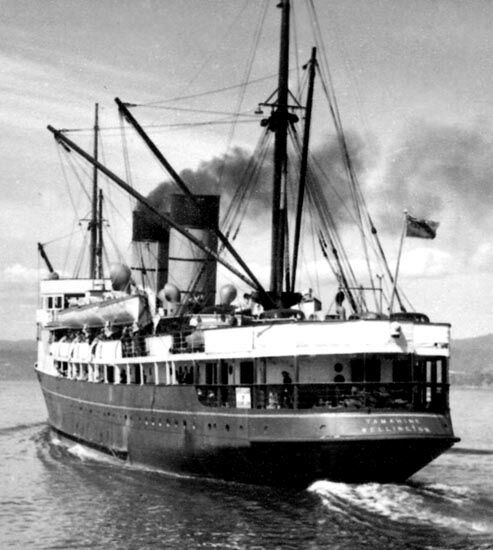
T.S.S. Tamahine is
seen sailing trough the Sound’s back towards Cook Strait and
Having returned to
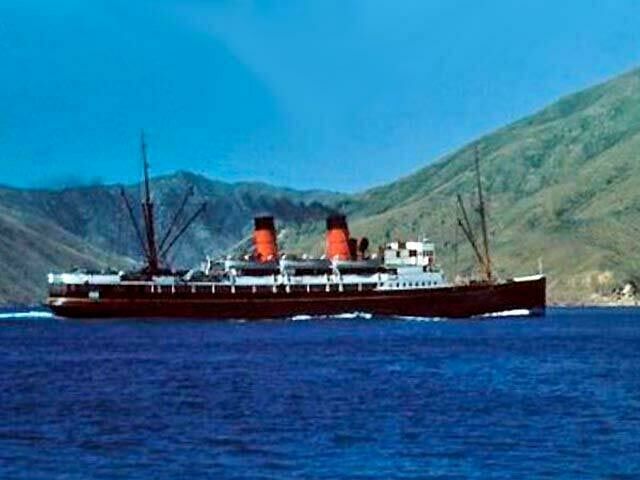
T.S.S. Tamahine
heads back through the Marlborough Sounds and Cook Strait to
Provided by Jason
Hunter (Blenheim)
The “Tamahine” lovingly known as the
“Tam” faithfully kept the North and
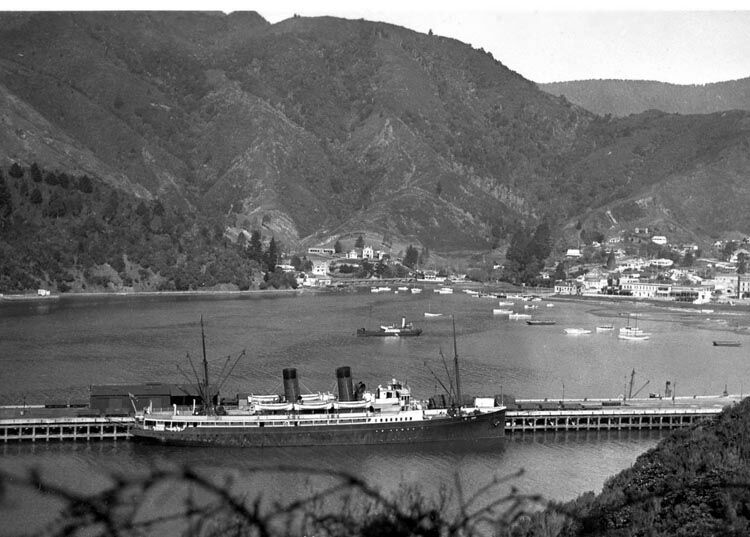
Above &
below: Three fine photographs of Tamahine berthed at
Picton’s
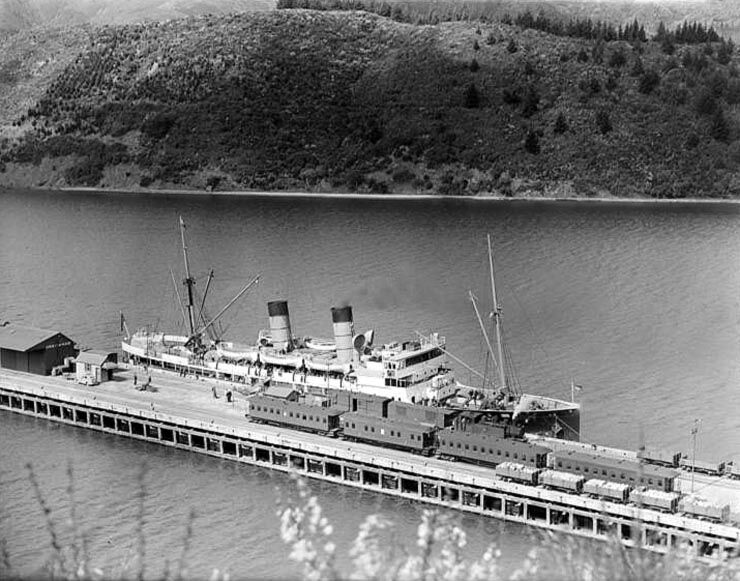

The “Tam” had always been something
of an "identity" with her lifelong slight list which
was coupled with affection and a respect that had been earned
over the decades. For the “Tam” was known for that she
would almost always sail, even though at times the
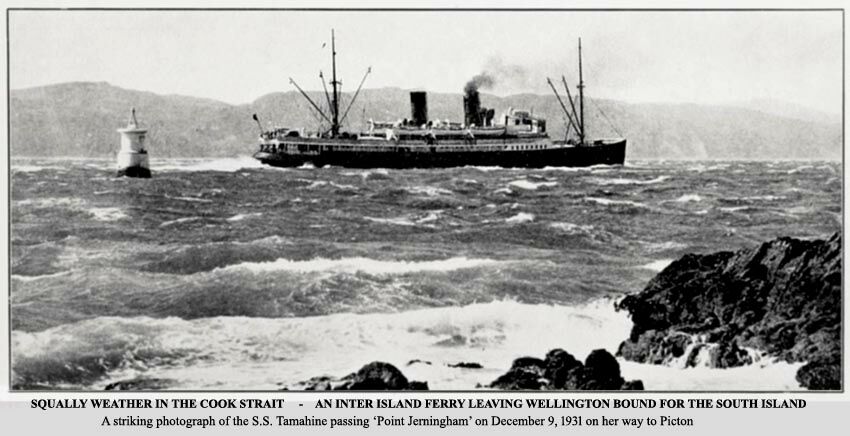
An unusual postcard of the “Tam” sailing on a squally weather day, which does nothing to her
She just sails on without any problems as she was an amazingly fine sailing ship, list and all!
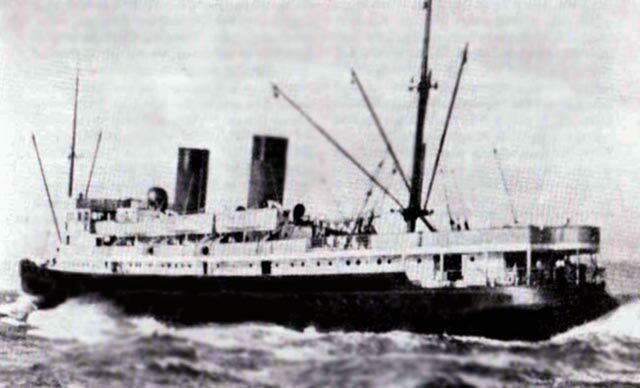
Another squally day at sea for the “Tam”, but this was a relatively good day
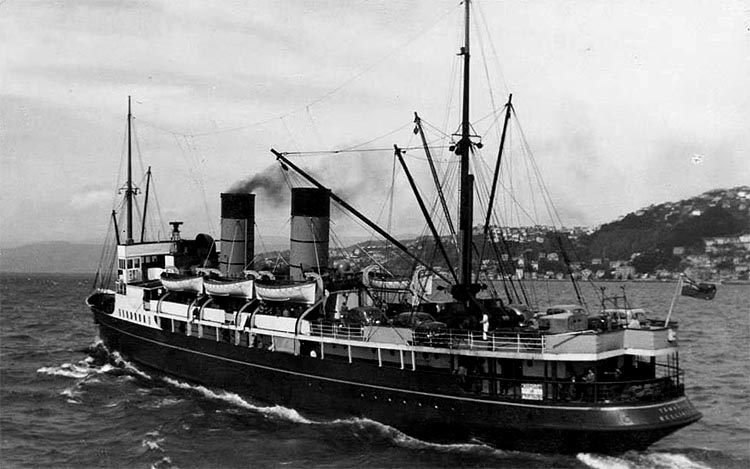
The “Tam”
is seen departing
I was very obvious that she had a permanent list to port, which was due to the USSCo decided that riding with water ballast was not the best, thus 40 tons of concrete was poured into its tanks, however during the pouring, believe it or not, trusty old windy and wet, Wellington suddenly blew up its famous northerly gale and it had the ship listing, yes you knew it, to PORT and yes the concrete set not quite the what they intended. It may have been better to do in dry-dock.
When I say cruise ship, do not get the wrong idea, for she was certainly not the luxury cruise ship you booked on, and you had you luxury cabin booked and you are off visiting ports galore and you will be back in a week, or two. No such luck, but she would operate a full day cruise to the beautiful Marlborough Sounds and the other magnificent Sounds and stops would be made and excursions would be available to head ashore, etc. The ship certainly offered a holiday feel on board with music and various activities and a running commentary as the ship sailed into the sounds.
These weekend full day cruises became so
popular, they needed to be booked long in advance and you would
have to book very early, especially if you wanted occupy a cabin
for your comfort.

The ever listing
“Tam” departing
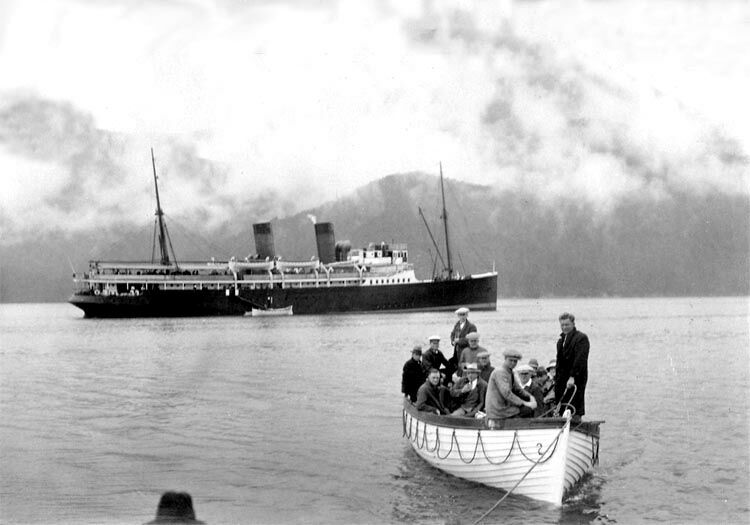
Special stops are made and passengers can board a lifeboat and undertake a short tour
There is a range of activities that makes the cruise an exciting event!
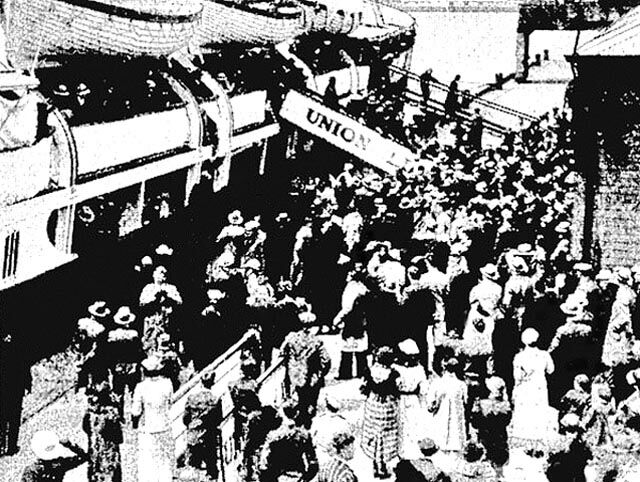
At the end of an exciting day passengers just do not want to leave as they enjoyed
a really great day on the “Tam” and seen so many fine things on their cruise!
*********************

Now we have learned a great deal about the dear old “Tam”, let us now take a closer look at the ship herself:
Sadly there are not many photographs of her
lounges available, but I will provide whatever I have been able
to locate through some of my Kiwi friends and I thank them very
much.
There were just four passenger decks on the dear old “Tam”, but for some reason they were given the most ridiculous names, such as; Boat (A) Deck (this on is fine!), next is Bridge (B) Deck, going down comes Upper (C) Deck, and finally Lower (D) Deck. The Only Deck that was correctly named was Boat Deck.
Thus these four decks really should have been named as follows, but I will also include the other two non passengers’ decks.
Far Forward Deck not named - should be named Bridge Deck.
Boat (A) Deck - correctly named.
Bridge (B) Deck - should have been named Promenade Deck.
Lower (D) Deck - should have been named B Deck.
Crew Deck - Should have been named C Deck.
However with “The Ships Layout”
below, I will use the official names as per the plan (as seen
directly below) for simplicity sake.
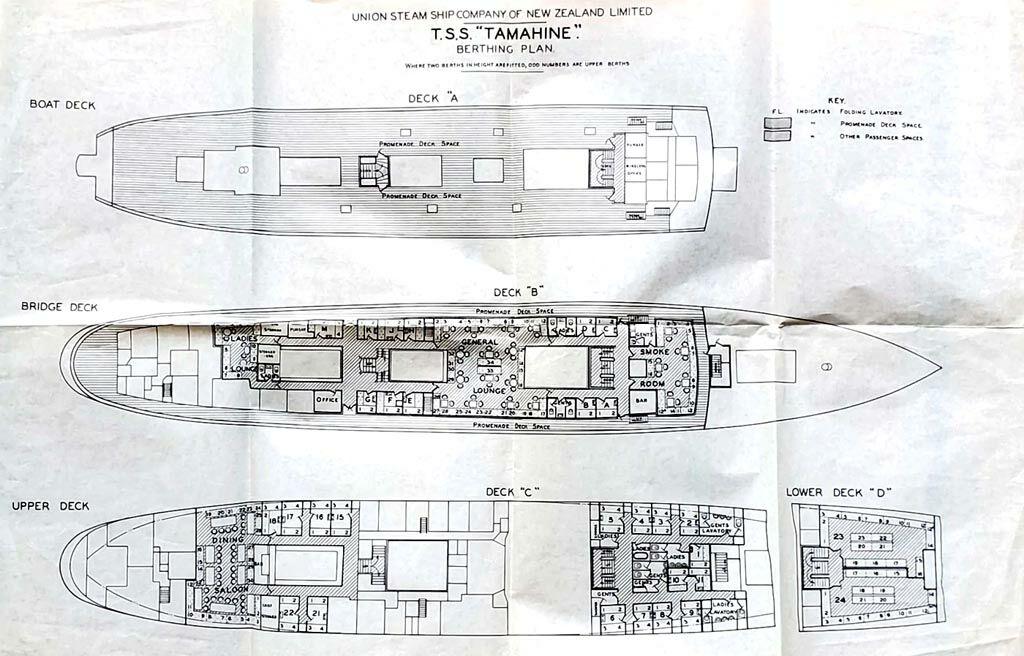
Please Note: this deck plan may be seen in a much larger version online just CLICK HERE
It will open small,
just click on it once loaded and it will enlarge
When finished use
the back button (arrow) to return to this page (on your computer)
Boat (A) Deck the officer’s quarters are located on this deck, which were very spacious, whilst the deck space was long and extremely wide. This deck could be reached via the ships two main stairwells, one forward and the other amidships.
The exterior deck was fitted with stanchions for the erection of awnings to ensure that the covers would be there when needed for her passengers who preferred the elevated position of this promenade for viewing the spectacular sights of the Marlborough-Sounds the “Tamahine” sailed through! Many Wellington local’s tended to occasionally book a daytime return voyage and enjoy the spectacular scenery of the “Marlborough Sounds”, but it also includes the beautiful “Queen Charlotte”, “Kenepuru”, “Pelorus”, and “Mahau Sounds”.
Beside the spectacular views, it is also to enjoy the cruise and savour her three fine lounges located on Bridge (B) Deck, and have a delicious meal in the Dining Room aft one deck down, strangely called Upper (C) Deck. And then they would also spend several hours in Picton and enjoy some shopping time there. Thus it is a great day out! Then there was one more deck with accommodations and that was Lower (D) Deck located forward. Here there were just two large dormitories all with lower beds the port side had 23 beds and the starboard side 24 beds, they could be either male of female, depending the demand.
The truth is; the decks should have really been named as follows and remember I was a cruise ship owner!
‘The Bridge’: Topside far forward is the ships Bridge, but sadly no image has been found, but I do have a fine photo sent to me by Jason Hunter from Blenheim (NZ) of a view aft of the Bridge.
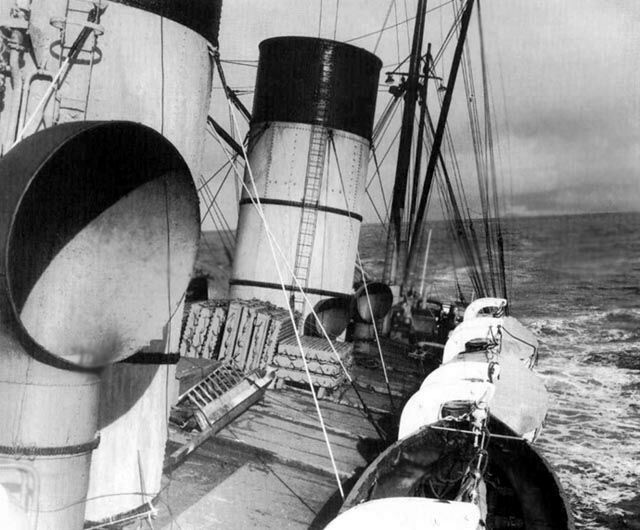
A view aft of the Bridge and her list to port is rather obvious
‘Boat (A) Deck’: The officer’s quarters are located on Boat (A) Deck, which were very spacious, whilst the deck space was huge long and extremely wide. This deck could be reached via the two main stairwells, one forward and the other amidships.
the exterior deck was fitted with stanchions
for the erection of awnings to ensure that the covers would be
there when needed for her passengers who preferred the elevated
position of this promenade for viewing the spectacular sights of
the Marlborough-Sounds the “Tamahine” sailed through!
Many Wellington local’s tended to occasionally book a
daytime return voyage and enjoy the spectacular scenery of the
“Marlborough Sounds”, but it also includes the
beautiful “Queen Charlotte”, “Kenepuru”,
“Pelorus”, and “Mahau Sounds”.

Cruise passengers are seen up on Boat Deck enjoying a great day out
They are currently
mid
‘Bridge (B) Deck’: Far forward is the “Smoke Room” which is beautifully designed with the finest of timbers, such as mahogany cladding along the walls as well as elegant furnishings which are also of the finest of timbers and lounge chairs, beautifully upholstered. There are windows on three sides with sofa style seating along the three sides. A Steward service bar is located aft on the starboard side, whilst a ‘Gents’ if aft on the port side. Two doors aft take you out to the Lobby and the forward Stairwell. The stairs takes you up to Boat Deck and the two passenger decks below.
On both sides of the ship there was a passageway and on each side there were two 2 berth cabins, followed by a Gents WC and a Bathroom on the starboard side and the Ladies one on the portside.
At the end of the passageways, doors led into the Lounge.
The “General Lounge” was simply
beautiful and very elegant and again featured that beautiful
timberwork along the walls and elegant round columns in the
centre of the venue. The ceiling had a large square stained glass
light feature, which made this venue truly look spectacular! The
furnishings were kept on a relaxing side as the seating had been
decided on a more traditional style with wicker chairs, with a
centre double sided upholstered sofa, as well as sofa’s
along the walls, as it gave more room for guests to be seated.
Both round and square tables were of oak, but were mostly covered
with a small table cloth as it was a popular location for morning
tea and a hot bullion, etc.
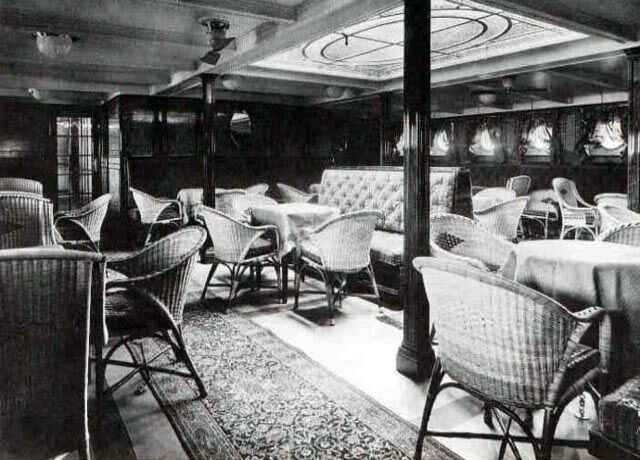
The General Lounge
On each side aft of the Lounge there were again two hallways and each side had three 2 berth de-Luxe cabins, these cabins all had a sofa as well as additional fittings. The last of the trio on each side lined up at the amidships Lobby and Stairwell, which went up to Boat Deck, and one deck down to the Dining Room.
Heading aft again on the portside hallway first there was one only 4 berth de-Luxe cabin that also had a sofa, followed by the Pursers Office, and a Shop. Whilst on the Starboard side there was the Purser’s office, but for his personal use only, as well as other facilities. Towards the end of this hallway was a ‘Ladies’ facility, and the next venue will make us understand why.
Each hallway had a door at the end and it entered the “Ladies Lounge”, a small venue, but again delightfully elegant decorated, with some fine timbers, but this time some more lighter tones and some brighter colours here and there.
We will now take the amidships stairs down to the officially named ‘Upper (C) Deck’ which should really be A Deck.
‘Upper (C) Deck’: As we arrive on this deck I will head aft on the port side where there are five 4 berth cabins, whilst on the starboard side there are only two 4 berth cabins.
Directly aft of these is the ships Dining Room which had a lighter colour scheme, but furnishings all being in oak and the venue was superbly laid out, pending the type of food being served at the time. The venue had seating for 59 guests per sitting.
The rest of the facilities were located forward, but that meant we have to go up one deck and head for the forward stairs and go up one deck, and come down again to ‘A Deck’ forward where there are four 4 berth cabins on each side of the ship thus eight cabins in all, but also three 2 berth cabins, being the only inside (no porthole) cabins on the entire ship. Public facilities were all close by for both genders.
‘Lower (D) Deck’: Remaining forward there were two dormitories, both having lower sofa style beds along the walls as well as in the middle of the venues, accommodating 23 on the portside and 24 on the starboard side.
Thus she had four passenger decks, with an additional crew deck below, as well as machine and storage and cargo spaces.
Well that has given you the basics of an
unusual small ship, but to Kiwi’s - New Zealander’s,
she was a very special small ship and she was very dear to
everyone, including myself at that time. Yes I in New Zealand
from 1958 to 1963 and whilst there, I worked for the ‘Royal
Dutch Mails’, The ‘Netherland Line’, ‘Royal
Rotterdam Lloyd’ & ‘Holland America Line’,
etc, until the ‘Union Steam Ship company’ in Wellington
Head Office offered me a managerial job. Thereafter I was offered
a most senior position in
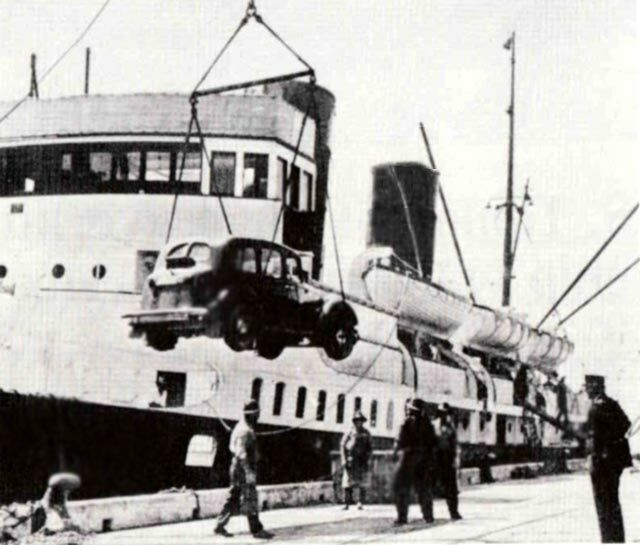
A car being loaded
on board at
![]() The
“Tamahine” faithfully kept the North and South
Islands of
The
“Tamahine” faithfully kept the North and South
Islands of
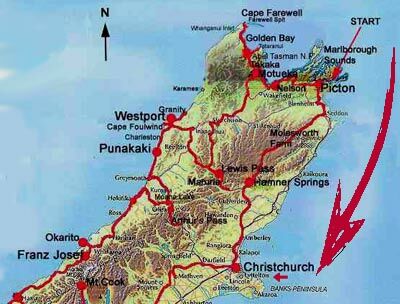
Map of the northern
part of the South Island with Picton and Lyttelton and
Being staff member of the USSCo whilst I was on board one day, the engineer who I had just delivered some paper too, asked if I would like to come down in the engine room which I did, as I had been in so many engine rooms of other of our ships, and I was always fascinated with the “Tam”.
There was that something special about a steam ship engine room. All that well kept and the glistening engines, the brass gleam of pressure gauges, even the smell of oil and the warmth from the boilers, and that all added to the environment of the engine room.
Two images remain fixed. On the bulkhead was a
vertical brass arrow, pivoted at its upper end. The brass backing
plate bore the evidence of how far the ship rolled. For 20 or 30
degrees the wear marks were well in evidence. I enjoyed the
massive enthusiasm of the engineer as well as his crew, for they
treated the engine room as their friend, something to be loved,
and to be cared for. And these were tough blokes, yet soft in
some ways when it came to their work here in this great big room
in a small ship!
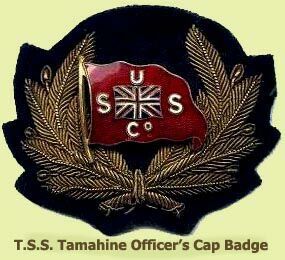
But when I think of it, I am well aware of the many voyages they endured when they suffered really wild weather for the Cook Strait can be one of the worst any where on earth, and when it goes wild, believe me, I have been there it is HUGE!
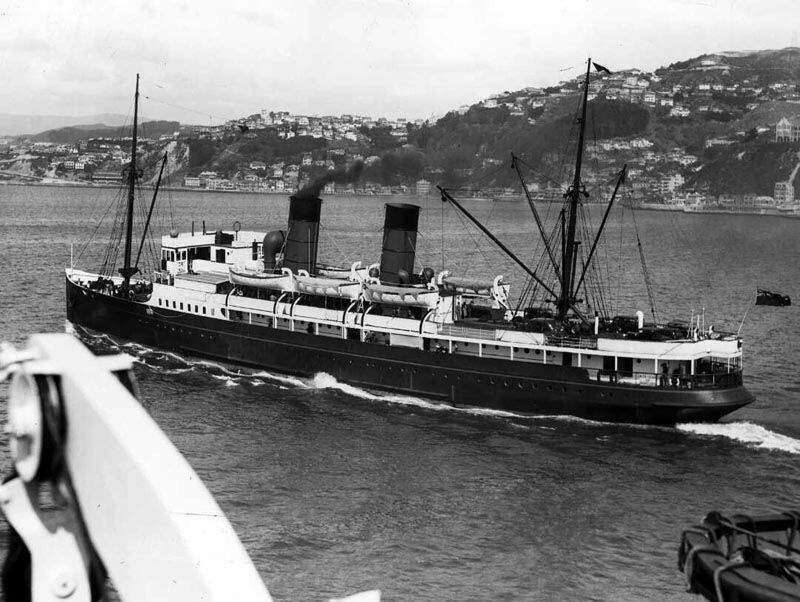
T.S.S. Tamahine is
seen departing
This photo was taken from the deck of the USSCo’s magnificent
13,482 GRT luxury Trans-Pacific Liner the T.S.S Awatea

The “Tam” seen at Picton and listing as usual
Although the “Tam” continued her
regular services to and from Picton, but as the war continued
with thousands of troops needing to be transported both
Australian and
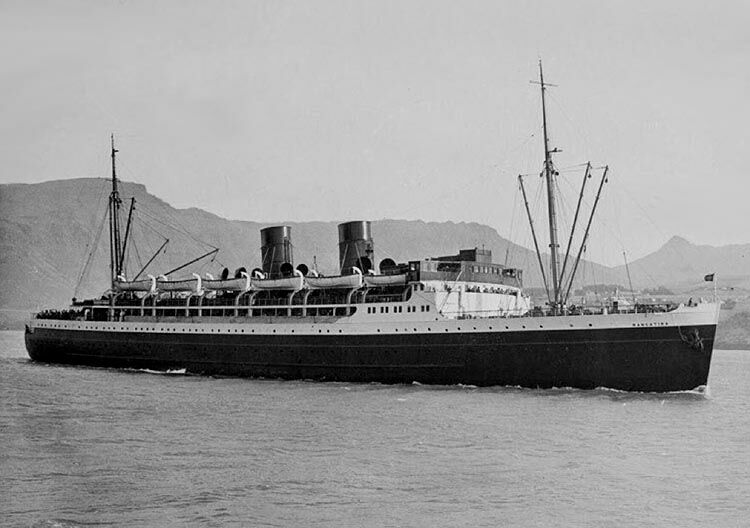
The magnificent much larger version of the “Tam”, but the far more luxurious, T.E.V. Rangatira
Thus the USSCo decided to place the T.S.S.
Tamahine on the
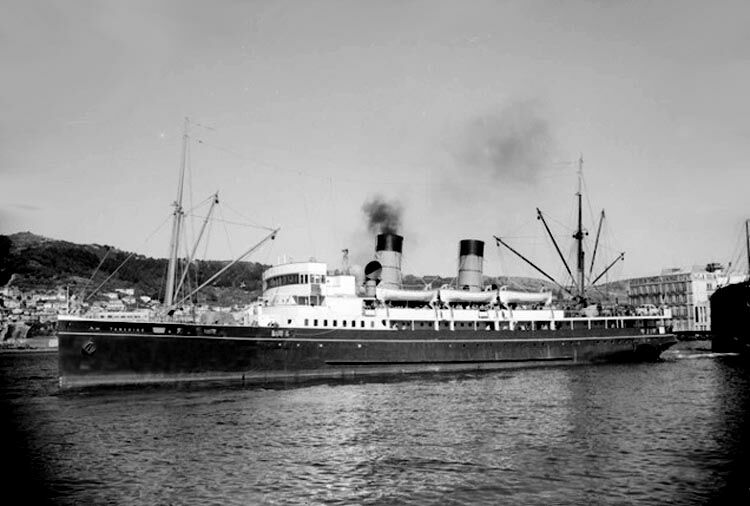
Departing
But what did keep her continually busy were the
thousands of troops that were stationed in the Marlborough
District, and the “Tam” was used to supply them with
all their needs. In addition she would have to transport soldiers
between the two Islands as the airport was in
Post war she continued to keep very busy as
always, for she was known as “the brave little steamer with
a long service”. For she was known that she would sail, no
matter the conditions, war, or no war the “Tam” was one
of the moist remarkable and trustworthy small ships that was ever
built!

Another departure of the “Tam” the stern in view is the Trans Tasman Liner the T.S.S. Monowai
The Union Steam Ship Company received new ships
in the 1940’s, such as the
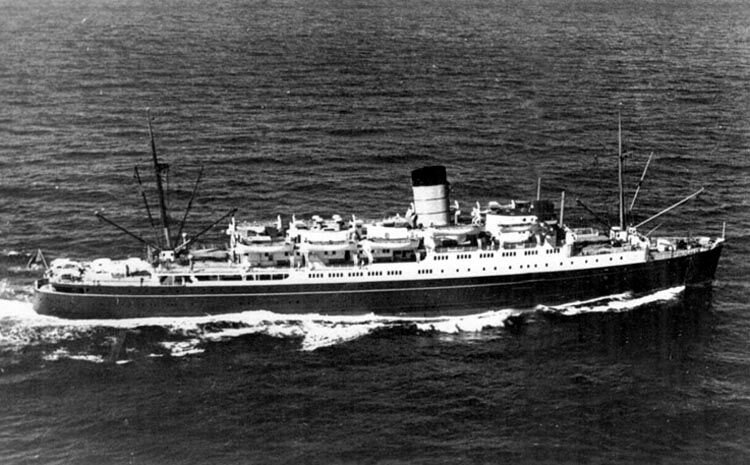
The delightful “Hinemoa” spent a bit of a wild night on board her sailing to Lyttelton
But the cabin was very comfortable and the food on board was great!
I returned on the newer ship the T.E.V. Maori of 1952, my trip south was in 1960
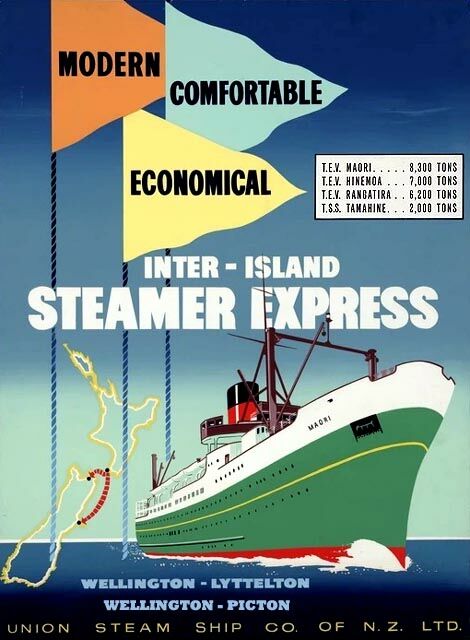
A brochure cover featuring the USSCo’s four Inter-Island ships,
The ‘Tamahine’, ‘Rangatira’, ‘Hinemoa’ and their newest ship the ‘Maori’
As we entered into the 1960’s slowly time was running out for the dear old “Tam” and the “Union Steam Ship Company” knew well that her better days were well behind her and they decided that sooner or later it was time to place her on the market. Also, ‘New Zealand Railways’ had their new new roll-on, roll-off ferry almost completed, being their brand new G.M.V. Aramoana.
This day was very remarkable for the
“Tam” as she departed on her 16,000th return crossing
of the

A very poor photo
of the “Tam’s” final departure from

The T.S.S. Tamahine and the new G.M.V. Aramoana are seen together at Piction
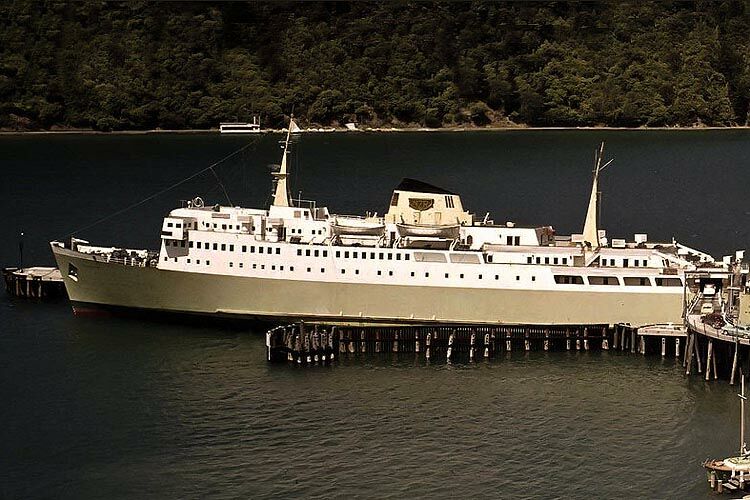
The G.M.V. Aramoana is seen docked at her new roll on and off berth
at Picton and cars can be seen driving on board
At
The ‘good old ‘lister’, the
“Tamahine” having made so many crossings, had carried
well over 2 million passengers, both to and from the South
Island, as well as many more on her weekend day cruises. In
addition she transported countless thousands of cars in her two
holds as well as a huge quantity of cargo, which was not bad for
such a relatively small ship that operated a 3¼ hour voyage each
way, to and from the North to South Island of New Zealand,
usually 6 days per week, but never on Christmas Day, and on some
weekends when she would operate her very popular day cruises to
the Sounds.
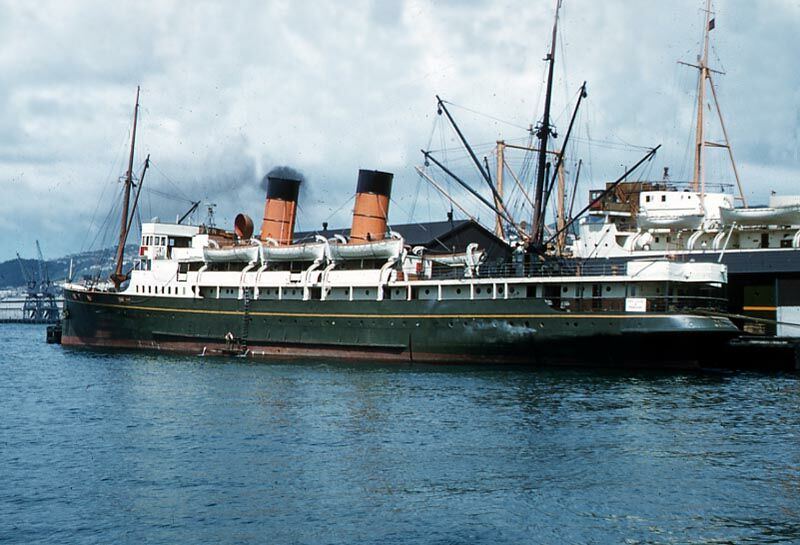
The
“Tamahine” is seen docked at the Inter-Island ferry
wharf at
with the T.E.V.
Maori the
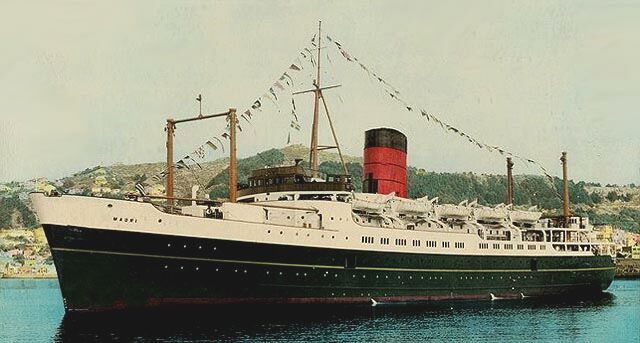
The 8,303 GRT, T.E.V. Maori of 1952
And as I mentioned I sailed on her as well from Lyttelton back
to
The “Tam” Goes Asian:
She was soon renamed “Kowloon Star”
and reregistered in
Obviously countless locals turned up dock side
for one final look at their much loved “Tam” before she
would leave
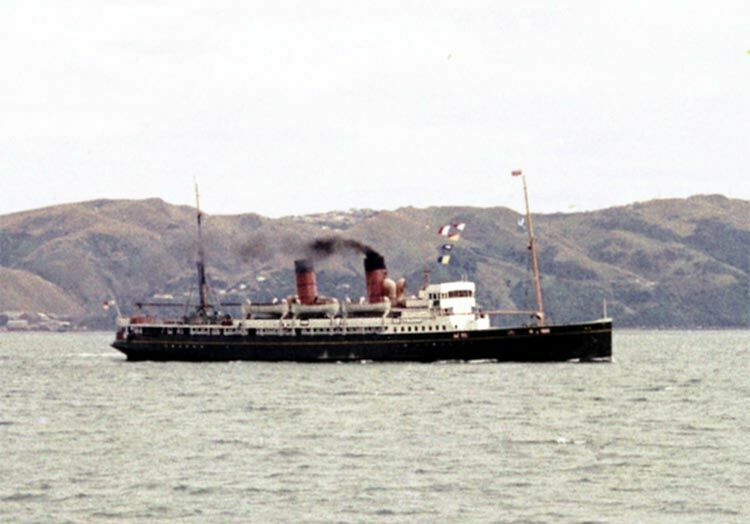
T.S.S. Kowloon Star
is seen departing
Note the Panamanian flag flying from her stern
When she arrived at
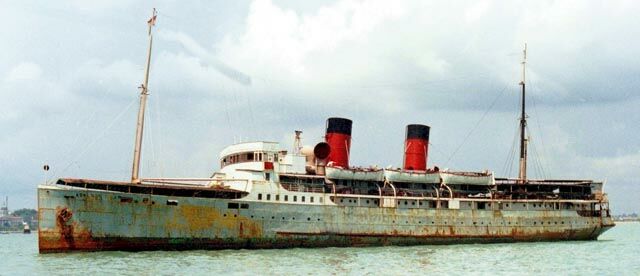
The “Kowloon Star” - This may be a photograph when she was in her
final days and most likely the time she was going to be broken up
*********************
Specifications & Details of the
T.S.S. Tamahine:
Registered Owners:
The Union Steam Ship Company of
Managers & Operators:
The Union Steam Ship Company of
Builder:
Swan, Hunter & Wigham Richardson Ltd, at
Country:
Yard N°:
1198.
Registered at:
Official N°:
151506.
Classification society:
Lloyd’s Register.
Launched:
July 8, 1925.
Trials:
October 1945.
Maiden Voyage:
December 21, 1925 -
Tonnage:
1,989 GRT (Gross Registered Tons), 803 NRT(Net Registered
Tonnage).
1948:
1.968 GRT, 767 NRT.
1956:
1,964 GRT, 762 NRT.
Length:
80.13 m - 262.9 ft.
Breadth:
12.25 m - 40.2 ft.
Draught:
3.98 m – 13.07 ft.
Engines:
2 triple-expansion steam engines 2,500 HP.
Power:
440 NHP.
Engine builders:
Ship builders.
Propellers:
Twin screw.
Speed:
15 knots service speed, maximum 17.3 knots.
Passenger capacity:
86 berths in de-Luxe & standard cabins, 47 beds located in
the two Lower (D) Deck venues, also seating in all the public
venues; total of 637 one class passengers.
Schedule:
Sold:
‘Hong Kong Shipping Co (
Sold:
‘Leung Yau breakers yard’ - April 1969.
*********************
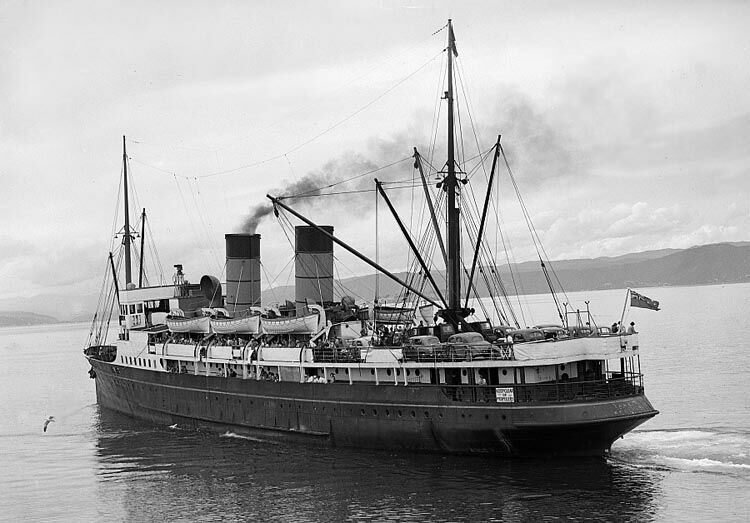
T.S.S. Tamahine is seen nearing the Marlborough Sounds
Provided by Jason
Hunter (Blenheim)
*********************
“Blue Water Liners sailing to the
distant shores.
I watched them come, I watched them go and I watched them die.”
Featuring well
over 1,435 Classic Passenger Liners, Passenger-Cargo Liners
& Classic Cruise Ships!
And since going online we have received an amazing 573.4 million visitors to date
Or ENTER HERE
For interest: Sadly an email service to
ssMaritime is no longer available, due to the author’s old
age and chronic illness as well as being disabled, etc. In the
past ssMaritime received well over 120 emails per day, but
******************************
ssMaritime.com
& ssMaritime.net
The Author has been in Passenger Shipping & the Cruise Industry for well over 60 years
In addition he was the founder of “Save the Classic Liners Campaign” in 1990.
Please Note: ssmaritime and associated sites
are 100% non-commercial and the author seeks no funding
or favours of any shape or form, never have and never will!
Photographs on ssmaritime and associate pages
are by; the author or from the author’s private
collection. In addition there are some images that have been
provided by Shipping Companies and private photographers or
collectors. Credit is given to all contributors. However, there
are some photographs provided to me without details regarding the
photographer/owner concerned.
This notice covers all pages; although,
and I have done my best to ensure that all photographs are duly
credited and that this notice is displaced on each page, that is,
when a page is updated!
ssMaritime is owned & ©
Copyright by